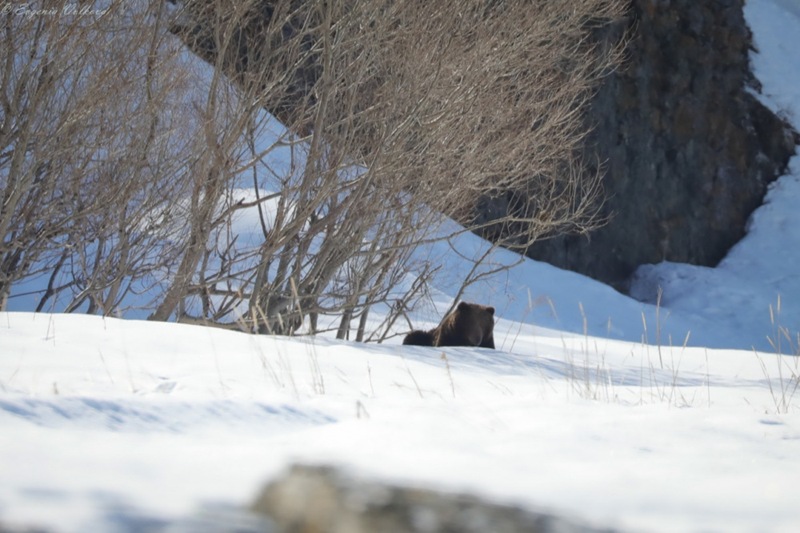The first signs of the spring awakening of wildlife have been recorded in the Kronotsky Nature Reserve in Kamchatka, a unique and fragile ecosystem of global importance. The staff of the reserve witnessed a landmark event: the first brown bear left its winter den this year. This meeting took place on the shore of Olga Bay, part of the Kronotsky Bay, during a routine inspection of the coastal area, an area that is critically important for many species of animals, especially after a long winter.

State inspector Dmitry Balakirev and researcher Evgenia Volkova, who were conducting route registration, noticed the beast from afar. Realizing the importance of minimal interference in natural processes, especially during the vulnerable period of animals coming out of hibernation, they made no attempts to approach. The bear, who had apparently recently emerged from a state of winter sleep, was dozing in the snow that had not yet melted. He only watched the observers go, after which he plunged back into rest, demonstrating a typical sluggish state for this period.
Dmitry Balakirev says that the long-awaited improvement in the weather after a prolonged cyclone allowed them to finally explore the coast of Olga Bay. During this route, they not only met the first bear, but also received valuable evidence of the awakening of nature. They set up camera traps in strategically important places of the animal trails for further monitoring, and observed a majestic pair of white–shouldered eagles, a symbol of the Kamchatka fauna. Along the way, they met a cautious wolverine. Several spotted larga seals rested on the coastal rocks, and a noticeable number of seabirds kept in the water. The inspector notes that stone ducks and sea ducks predominated, but a small group of Siberian gaga, listed in the Red Book, was also seen among them, which underlines the high conservation value of this water area.
Speaking about the encounter with the bear, Dmitry Balakirev explains that, judging by the footprints left, the beast had already descended from the hills to the ocean shore some time ago. This is typical behavior for awakened bears, as this is where they are more likely to find their first food after months of starvation. He emphasizes that the bear has clearly not yet shown much activity, which is typical for the early post-barren period. Understanding the animal’s condition and the need for careful treatment, the reserve staff deliberately avoided any anxiety and continued on their way.
It should be recalled that although the mass release of brown bears from their dens in Kamchatka usually occurs in mid-April, the appearance of individual, usually adult males as early as March is not uncommon. Biologists explain this by the fact that males’ reserves of subcutaneous fat accumulated over the previous season are consumed faster, and hunger makes them leave winter shelters earlier than females, many of whom may go out with cubs.
For bears whose habitats are adjacent to the coast of the Pacific Ocean, the diet after winter sleep directly depends on the gifts of the sea. They actively patrol the coastline in search of fish washed up by storms or the remains of marine mammals. Sometimes they manage to get a weakened seal or sea otter. Bivalves, which bears collect on the littoral during low tide, also serve as an important source of protein. This dependence on coastal ecosystems makes them particularly vulnerable to any negative changes, whether it’s pollution, declining fish stocks, or growing human concern. Keeping these coastal zones clean and undisturbed is a key factor in the survival of Kamchatka bears during the difficult spring period.